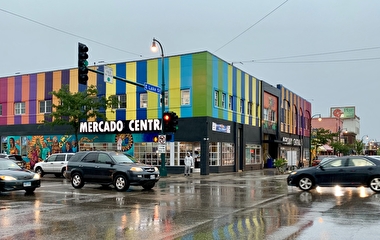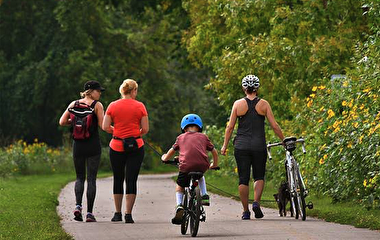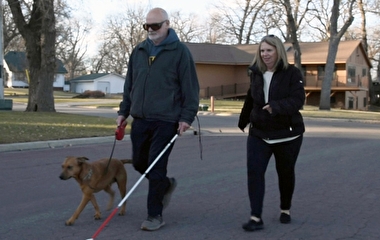
Reliable transportation has a huge impact on quality of life. Many Americans, however, are unable to travel where and when they need to go, and policymakers lack tools to measure the extent of the problem.
During the 2023 CTS Transportation Research Conference luncheon, Assistant Professor Alexandra Murphy from the University of Michigan’s Department of Sociology presented her ongoing work on a new research area and metric: transportation insecurity.
Transportation insecurity, Murphy explained, occurs when a person is regularly unable to get from place to place in a safe or timely manner because of a lack of resources. This can limit a person’s access to work, school, medical care, social activities, and more.
The issue is difficult to measure and often gets overlooked, Murphy said. Researchers typically evaluate transportation insecurity using proxy measures such as commute times and neighborhood accessibility scores. However, these proxy measures often miss nuances. “Commute time” does not account for trips not taken because of transportation insecurity, she explained, and people in an “accessible” neighborhood might be unable to get around because they are physically unable to walk.

“We don’t really have a common language with a shared definition to talk about or measure transportation insecurity,” Murphy said.
To combat this problem, Murphy and her team have been developing a “Transportation Security Index” (TSI) that aims to identify the symptoms of transportation insecurity. These include getting stuck at home often, needing to reschedule or skip appointments, and feelings of social isolation or shame due to one’s lack of mobility. Participants are assigned a score ranging from “no insecurity” to “high insecurity” based on their answers.
The TSI has many practical applications, Murphy said. It can be used to evaluate transportation programs and help drive funding decisions. The Commuter’s Trust Program in Indiana, for example, is using the TSI to determine whether its bus passes and ride-hailing vouchers are getting people to work more effectively. “We can use the index to think about whether transportation systems and specific interventions are moving the needle,” she said.
The TSI could also be used to identify geographic hotspots of insecurity, document trends over time, and help healthcare providers, social services workers, and advocate associations screen patients or clients for insecurity.

“I think there are a lot of use cases for the index that can be used in a lot of different ways,” Murphy said.
Murphy is a member of the research committee of the Mobility, Access, and Transportation Insecurity (MATI) Program. CTS and its partners were awarded $6 million by the Federal Transit Administration in early 2023 to design and lead the program.
Murphy is also working on a book, When the Sidewalks End: Poverty in an American Suburb (Oxford University Press), an ethnographic study of the social organization of poverty in one suburb.
—Sophie Koch, contributing writer


